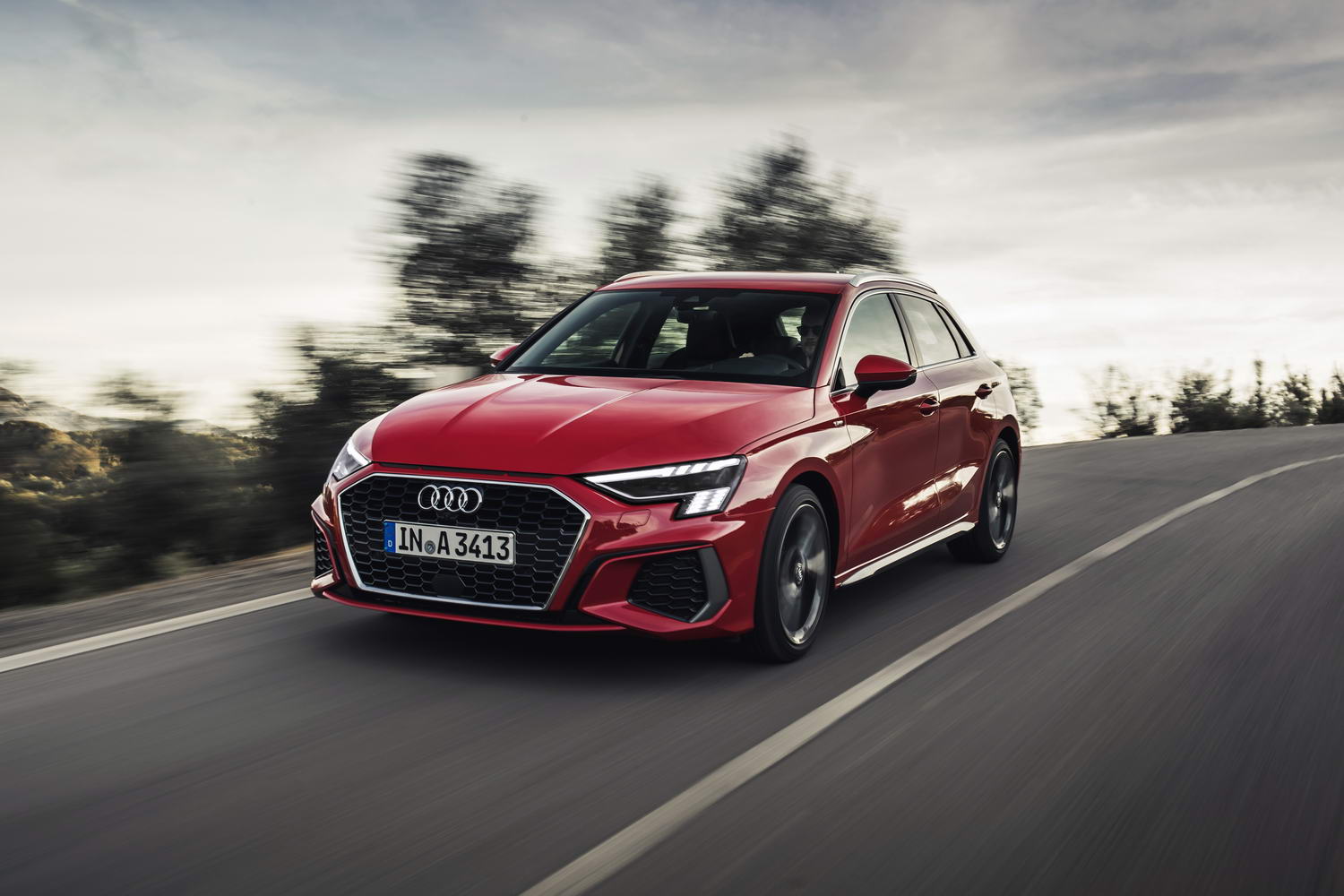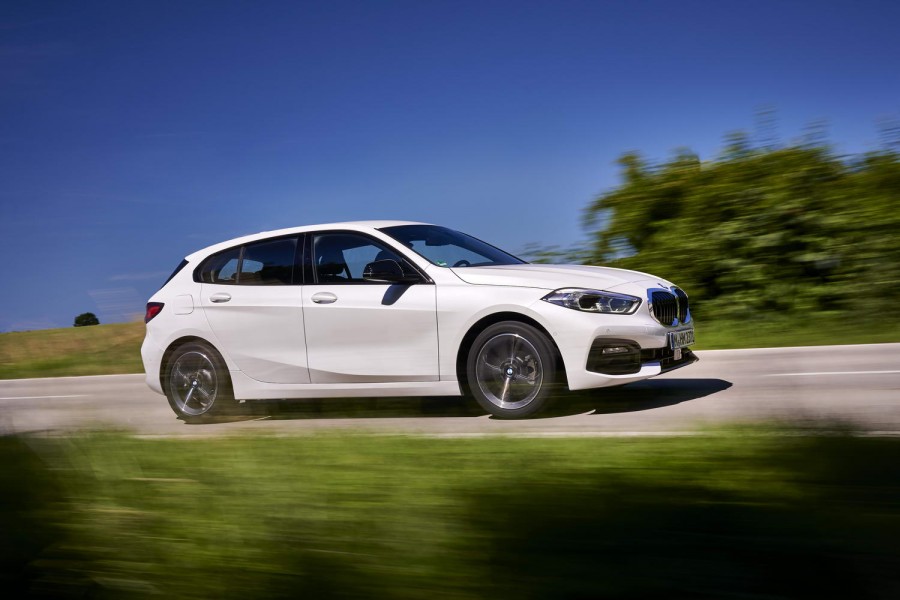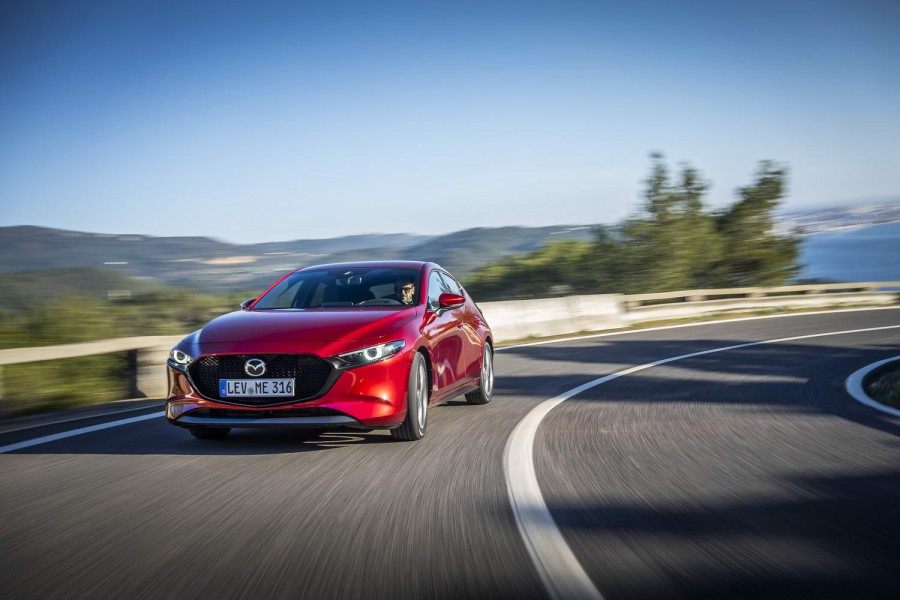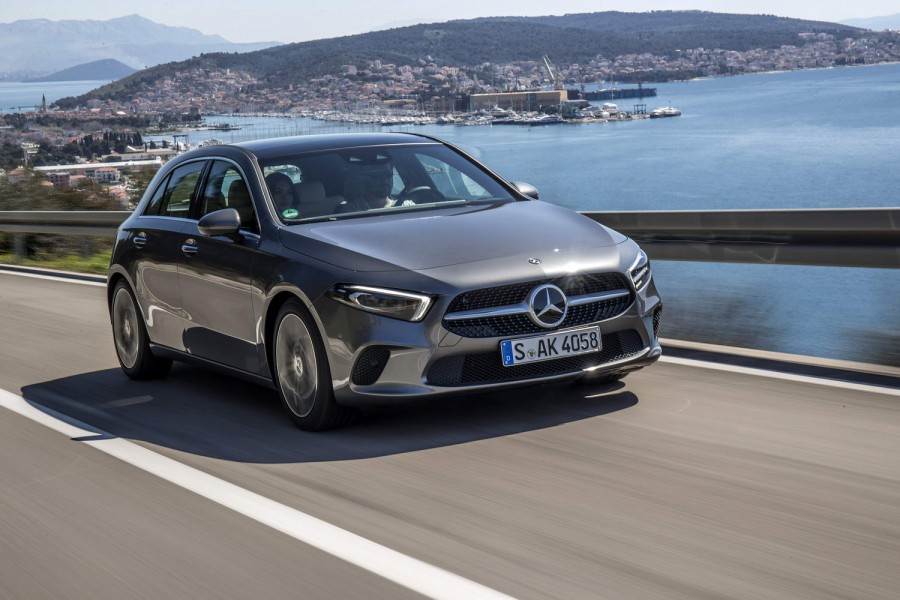The Audi A3 first came onto the scene in 1997 and since then more than five million have been sold around the world, a large proportion of which have used diesel power. Now we drive the latest TDI version that comes with improved performance and lower emissions.
In the metal
From a design standpoint, the 2020 Audi A3 demonstrates the single largest step in evolution, both inside and out, of any new generation. It uses an evolution of the previous model's MQB platform, so the overall proportions are pretty much the same. An increase in length by 30mm is mostly down to the new shape of the bumpers at each end, though the car is also 18mm wider in all, 11mm of which is down to a wheel track increase. Wheel sizes will start at 16-inch, increasing to 18-inch items that you see on this S line model, while 19-inch wheels are available optionally.
Speaking of S line, it's worth pointing out some of the differences that this sportier specification brings. From the front you'll spot a more open look with enlarged ventilation areas, some of which are just for show, such as the three horizontal slats between the top of the grille and the bonnet. Contrasting grey accents look especially good against this Tango Red paintwork, and match the graphite grey wheels. Chunkier sills along the side in a contrasting colour add to the car's presence, while at the rear there is a more defined aerodynamic diffuser that incorporates twin chrome elements that mimic exhaust outlets (they're not). The car also sits 15mm lower on to its stiffer S line suspension. Another distinguishing feature are the headlights, which are LED units on the S line model and include a unique daytime running light signature. The rear lights also get the LED treatment and, along with the lower vent details, give the car a wider appearance.
Speaking of appearances, the interior of the Audi A3 has undergone a major redesign resulting in a very modern look. It's dominated by a 10.1-inch infotainment touchscreen and a 10.25-inch digital instrument screen, which can be upgraded to a 12.3-inch unit. Audi is also offering a head-up display in the A3 now for the first time. Between the high-set air vents on either side of the instrument cluster, the flat open centre console (made possible by the removal of a traditional gear lever in automatic transmission cars) and the more angular design, the A3's cabin has plenty of appeal, while remaining very different to the interiors of the Mercedes-Benz A-Class and BMW 1 Series. For the S line version there are some subtle differences, including a branded steering wheel, though, unlike its predecessor, it isn't a flat-bottomed design. The front seats have a sportier shape to them, with moderate side bolsters and the S line logo embossed into the backs.
Driving it
It would be fair to say that a diesel engine - even by today's standards - will never match its petrol equivalent for refinement, yet in the new Audi A3 the gap between the two is a far smaller one than before. That's largely down to the latest evolution of the 2.0-litre TDI engine, which, as we've already seen in models like the Skoda Superb, has become a much more refined and polished power unit. Not only is it quieter in operation, the turbocharged four-cylinder is more responsive, too, and it certainly feels like you're getting a good chunk of that 360Nm of torque when you need it. Over longer runs, this 150hp variant should prove reasonably economical, though a more frugal 116hp version (badged '30 TDI') will better it again. All of the diesel engines also now feature a twin-dosing system for AdBlue to make the tailpipe emissions even cleaner. The second injection of AdBlue primarily helps at higher speeds. This setup doesn't necessarily mean that the A3 will now use twice the amount of AdBlue, though.
No matter what else Audi did, the increased track width of the A3 was always going to enhance the car's handling, but there's more to the hatchback's repertoire now. By default, the S line model gets a passive suspension setup that is 15mm lower and uses firmer springs to emphasise its sportier nature. For engines with 150hp and up, there's a more sophisticated multilink rear suspension setup to join the MacPherson front end that appears across the board. Less powerful models get a torsion beam rear. In this instance, the test car also had the optional adaptive suspension and Progressive Steering (a variable ratio system). Audis aren't traditionally great in terms of feel or feedback from their electromechanical power steering, but that has been remedied to a degree for the new A3. You get more of a sense of connection to the front axle than before, and the Progressive Steering adds more directness to that in tighter turns.
When in the Dynamic mode, we found the steering felt a touch too heavy, and not in a natural sense. It's much better in the Auto mode and through more technical and challenging roads the car felt very composed and quite engaging to drive considering this is by no means the most potent version that Audi will offer. It bodes well for the forthcoming Audi S3.
If you don't mind paying the little extra and the little extra in annual motor tax, the 35 TDI is the diesel engine to have in the A3. It delivers from a performance perspective and on longer runs will happily cruise in seventh gear with enough comfort to devour distances just as capably as a larger car would.
What you get for your money
We don't yet have pricing for the Audi A3 ahead of its launch in Ireland. This 35 TDI diesel version is likely to first be available with a seven-speed S tronic automatic transmission, which may be followed up with the availability of a six-speed manual. Once these details are confirmed we will update this section of the website.
Summary
If there was a doubt as to whether diesel engines can maintain a place in the market from 2020 then this version of the Audi A3 confirms it. It manages to provide enough thrills for when you take the long way home and should be economical enough for year-round motoring. Audi once more proving that it can do small cars every bit as well as its larger models.




























